When watching cartoons as a kid, were you impressed by the rack of ribs that was served to a certain Stone-Age family at that prehistoric drive-in restaurant? Were those mammoth ribs? And how would you go about eating them? Well, butchers a long time ago came up with a solution to that problem: cut the ribs shorter. And though we don’t eat mammoth ribs anymore, we can still get a caveman-style rib experience by cooking whole plates of short ribs—what some call “Dino Ribs.”

Dino ribs get their name from their big, meaty, size. They are fat ribs with loads of meat on them. Compared to baby back ribs, they are huge! Short ribs are a classic braising meat that has found a place in BBQ under the guise of a prehistoric treat. And they are delicious. Full of beefy, smoky flavor and tender to the bone, these ribs can slake even a hearty appetite with their richness. In this article, we’ll cover what short ribs are, and how to properly smoke them for optimal results.
Get the gear to make this dish now:
What are short ribs?
The first question to address is the question of short ribs themselves. “Short ribs” is butcher parlance for a partial cut of ribs from anywhere on the steer’s ribcage. They can come from the areas under the brisket, chuck, rib loin, or plate. Whereas baby back ribs and spare ribs both indicate a specific position on the hog, short ribs have more to do with how they are cut than where they are cut from the steer: they are short sections of rather long bones. Some butchers will give you the option of which kind of short ribs you prefer, but generally, it’s anyone’s guess whether your short ribs are plate, chuck, loin, or brisket. Each section will have a slightly different flavor of meat and fat. But regardless of which part they come from, they are all cooked the same—and they are all delicious.
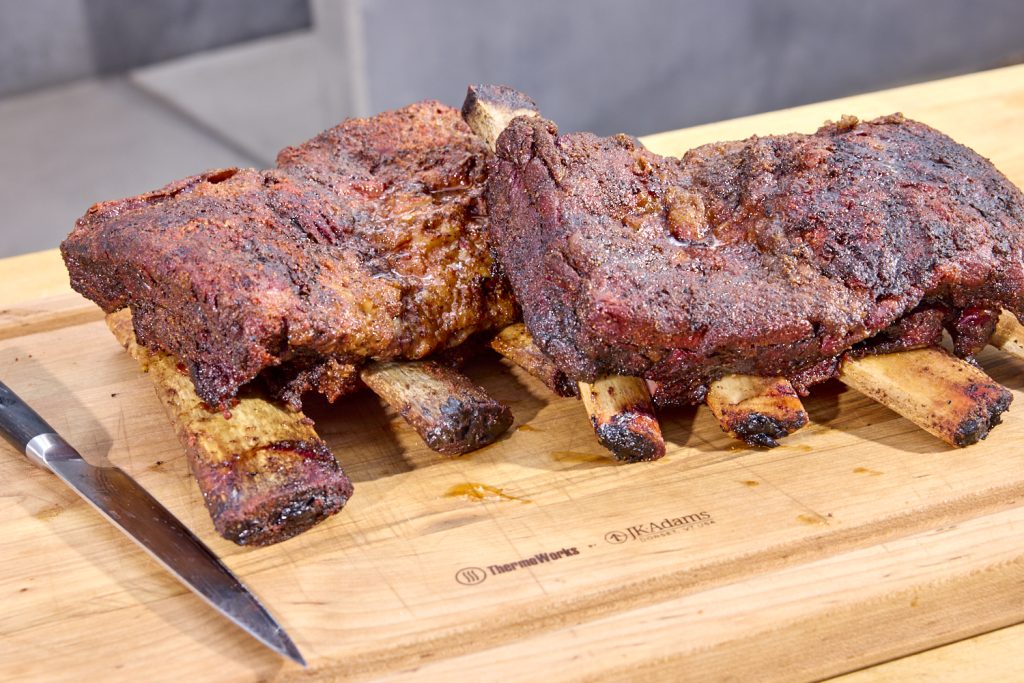
The difficulties of cooking short ribs
The cooking of short ribs is a story you have heard before if you are familiar with BBQ cookery. Ribs—being well-used, protective parts of the body—are filled with collagen. This connective tissue must be broken down by long, slow cooking to unwind into gelatin, with the unraveling beginning at 170°F (78°C), and accelerating as the temperature increases. (This is why short ribs are often cooked by braising; it’s an easy way to break down the tough connective tissues.)
As you cook up to temperatures where the collagen can melt, you’ll squeeze a lot of water out of the meat. When that locked-up water is freed and starts to evaporate, you get “the stall”. When the stall starts, you can either wrap your ribs and speed through it, or leave them bare for more smoke flavor and darker bark. Whichever method you choose, the point is to get those ribs to 203°F (95C°). If you get there quickly by wrapping, you’ll want to let them spend an hour or so at that temp (dissolution is a function of time and temperature), but if you take the slow road and cook them bare, they should be ready once you get to that critical temperature.
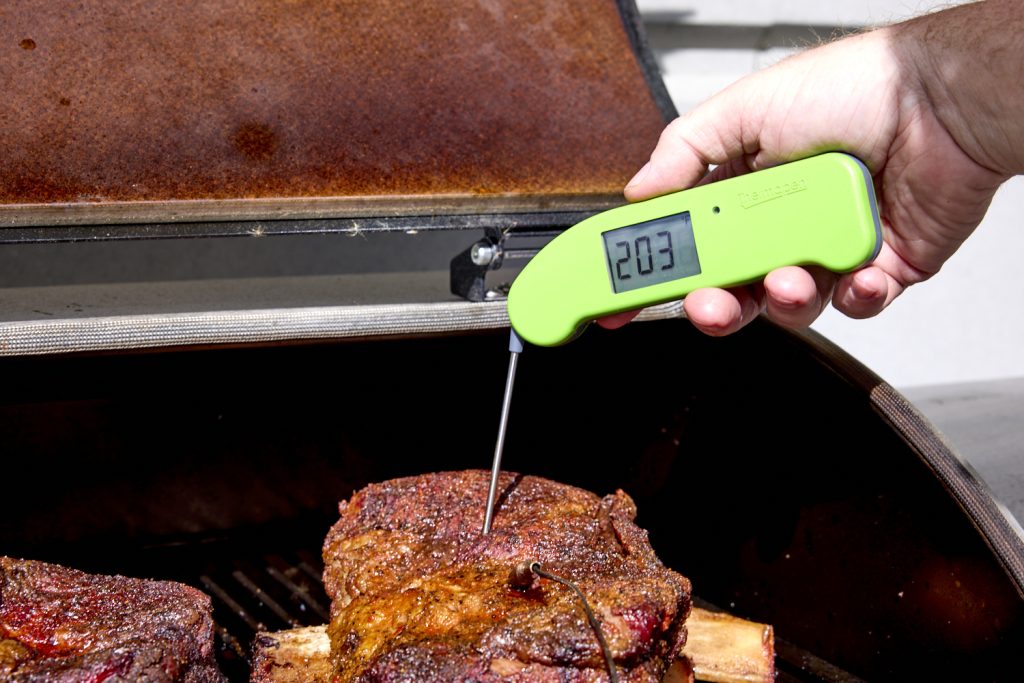
How to cook beef short ribs
Aaron Franklin, of the renowned Franklin BBQ, recommends smoking short ribs at 285°F (141°C). This slightly-higher temperature cooks the ribs more quickly, while not drying them out. A spritz or two of water or something more flavorful like apple juice during the cooking helps keep the edges tender. But one of the beautiful things about BBQ is that there is no one way to cook something. Others recommend cooking these ribs at 250°F (121°C). We opted for the lower temp on this run, though we have done it at 285°F (141°C) with excellent results. Whichever temperature you choose to use, monitor your pit and meat temps with a multi-channel BBQ thermometer like Signals.
We set our high-temp alarm for the meat probes to 160°F (71°C) and cooked up to that point. We then checked the bark, which was setting up very well, even with the one spritz we had given it. Why set the alarm to 160°F (71°C)? Because at that temperature, the stall is just starting to really get going. In the graph below you can see where the stall was going to start. At that point, we pulled the probes, wrapped the beef, and continued to cook. We also increased the smoker temp to 300°F (149°C), as the smoke flavor can’t get through the wrapping anyhow.
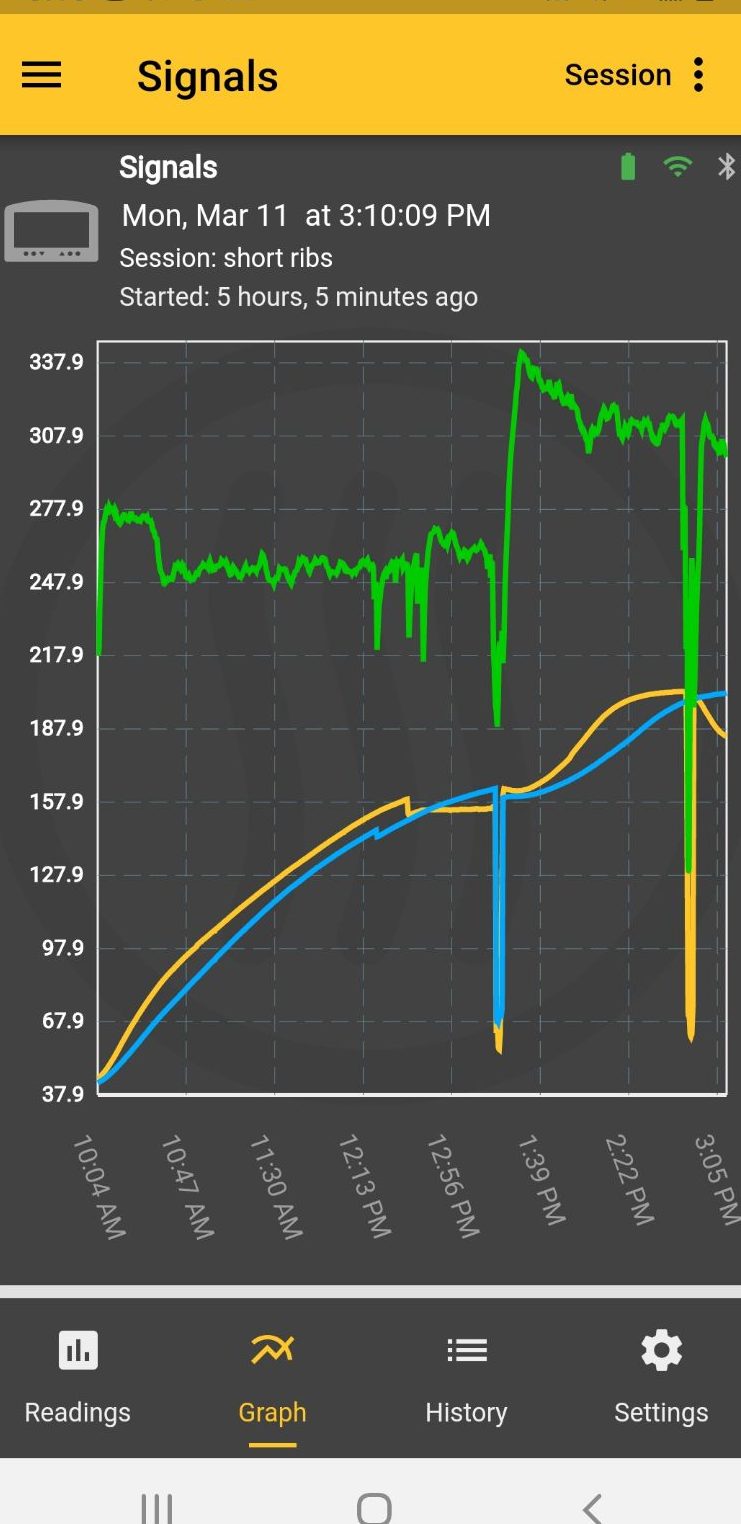
A graph like this can be very instructive. For instance, you can see the temperature of the pit (the top line in green). Putting our air probe close to our meat meant we could get the actual air temp of the pit, not just what the pellet smoker said it was. When the temp drops the first time is when we changed the setting on the smoker from 250°F to 225°F, as it was burning 25°F hot at its set temp. You can also see where we adjusted the probe positions in the ribs to find a cooler center. The dip in temp for the yellow line at the end is where we unwrapped it and let it rest in the smoker to reset the bark a little. Without the protective foil, there was a lot of evaporative cooling that happened quickly, dropping the meat temp.
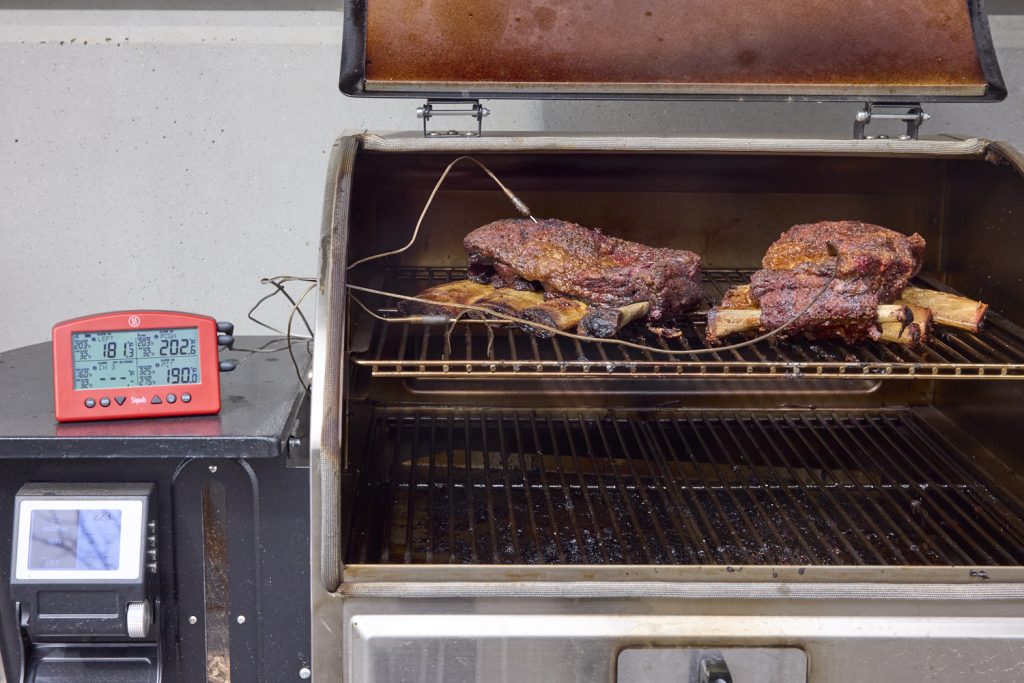
The graph was made using Signals, connected to the cloud. With the free ThermoWorks app, you can track your cook like a pro, watching the stall come and go right from your phone or smart device.
If you decide to wrap your short ribs, as we did, we recommend doing so close to the beginning of the stall, rather than using it to speed through the end of the stall. But you can, of course, leave them naked through the whole cook.
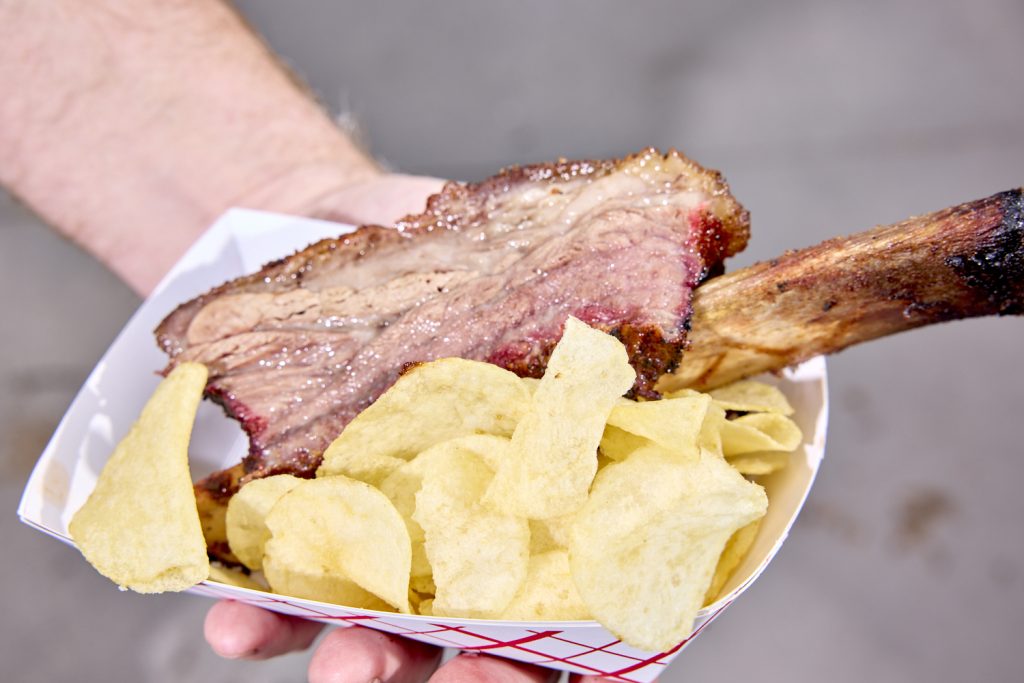
Though they take longer to cook due to their greater thickness, smoked short ribs are no harder to make than baby back or spare ribs. The key is to get them to a temperature that will melt the collagen that is binding the other proteins together—203°F (95°C).
And with Signals, you can watch the cook happening in the palm of your hand. Yes, the ribs were probably great at that Stone-Age drive-in, but the technology for cooking them is far better now!
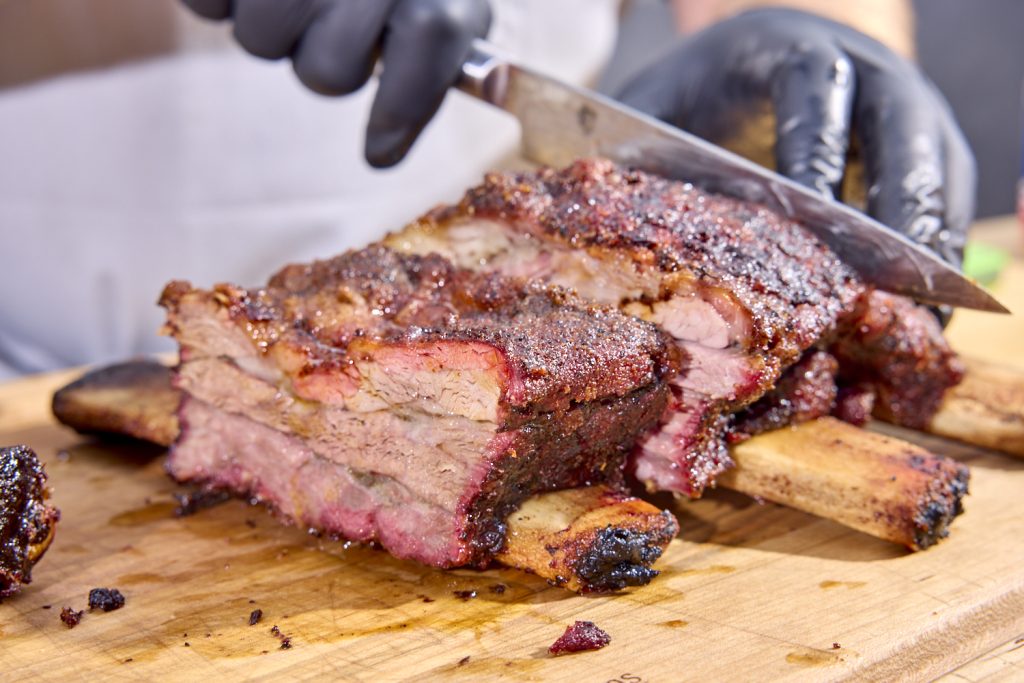
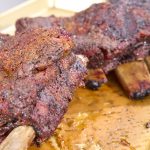
Smoked Short Ribs Recipe
Description
Smoked short ribs, with advice taken from Aaron Franklin and BBQ Bros.
Ingredients
- 2 racks short ribs
- ~4 Tbsp yellow mustard
- BBQ rub of your choice
- Something to spritz the meat with (vinegar, bourbon, apple juice, water, etc.)
Instructions
- Preheat your smoker somewhere between 250°F (121°C) (as we did) and 285°F (141°C). Use the air probe on your Signals to monitor the temp, alerting you if the smoker isn’t cooking at the right temperature. Connect it to your app, if you like.
- Trim excess fat and silver skin from the tops of the ribs. Try not to lose much meat in this process.
- Flip the rack over and score the membrane in a wide crosshatch pattern with a sharp knife.
- Rub the rack all over with the mustard. Coat generously with the rub.
- Place the short ribs in the smoker and insert the probes from Signals.
- Set the high alarm on your Signals for 160°F (71°C) if you plan to wrap the ribs, or directly for 203°F (95°C) if you plan to leave them naked during the whole cook.
- Smoke those ribs!
- After an hour of cooking, spritz the ribs so that they are damp but not super wet.
- If you’ve opted to wrap, do so when the high alarm sounds.
- Place the short ribs back in the smoker with the probe placed back in the thickest part of the meat (while avoiding touching bone). Adjust your smoker to cook at 300°F (149°C).
- Re-set the high-temp alarm for 203°F (95°C) and continue to smoke.
- When the alarm sounds on your smart device or the thermometer unit, probe the ribs and verify temp and tenderness with a Thermapen ONE.
- Let the ribs rest for an hour. If you have an ice chest/cooler, placing them inside for the rest will help them get even more tender, as they’ll stay at a higher temp without further “cooking.” You can also unwrap the ribs and let them rest in the smoker. Their temperature will actually decrease for some time if you do so.
- Once the ribs have rested, cut them between the bones and get to eating. Mmm … just like Wilma used to make.
For another look at BBQ short ribs, take a look at this post with a video from Harry Soo about his preferred method.
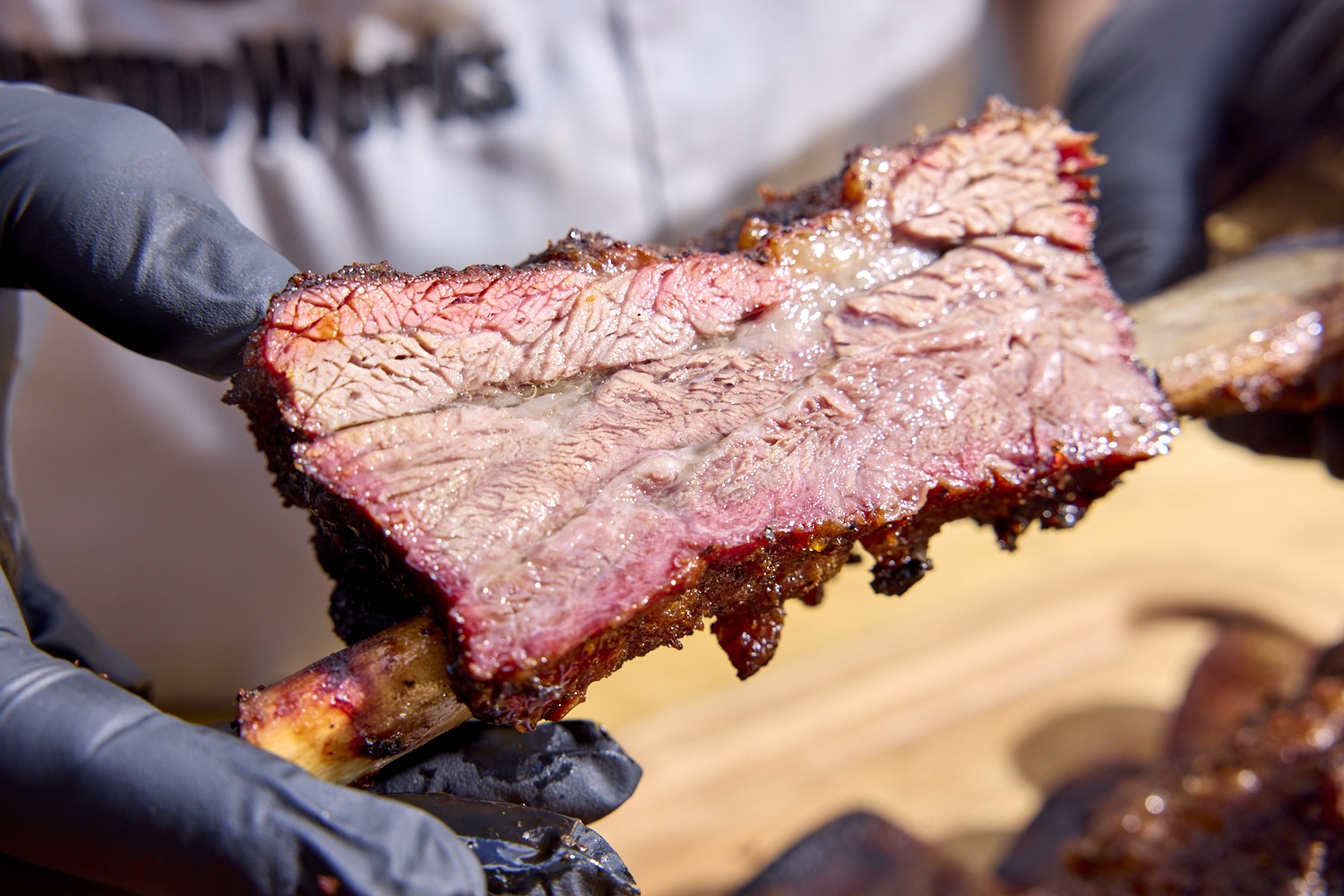
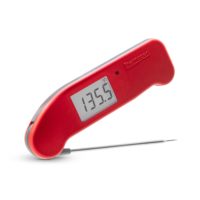
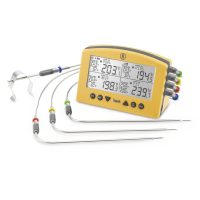
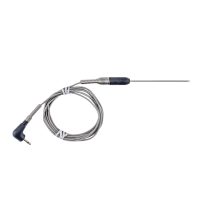
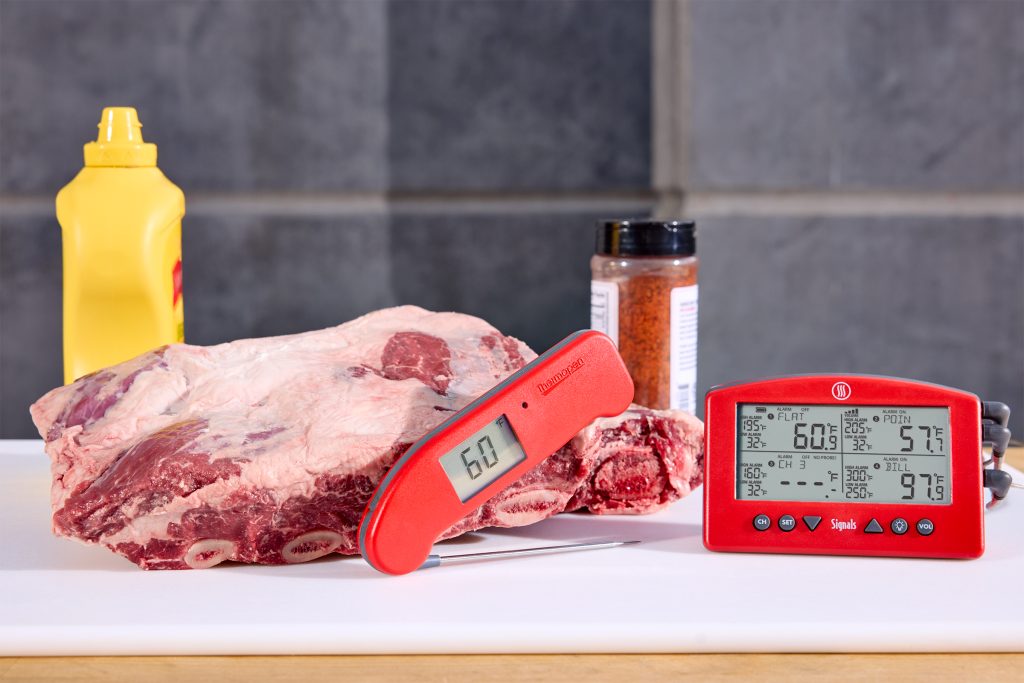
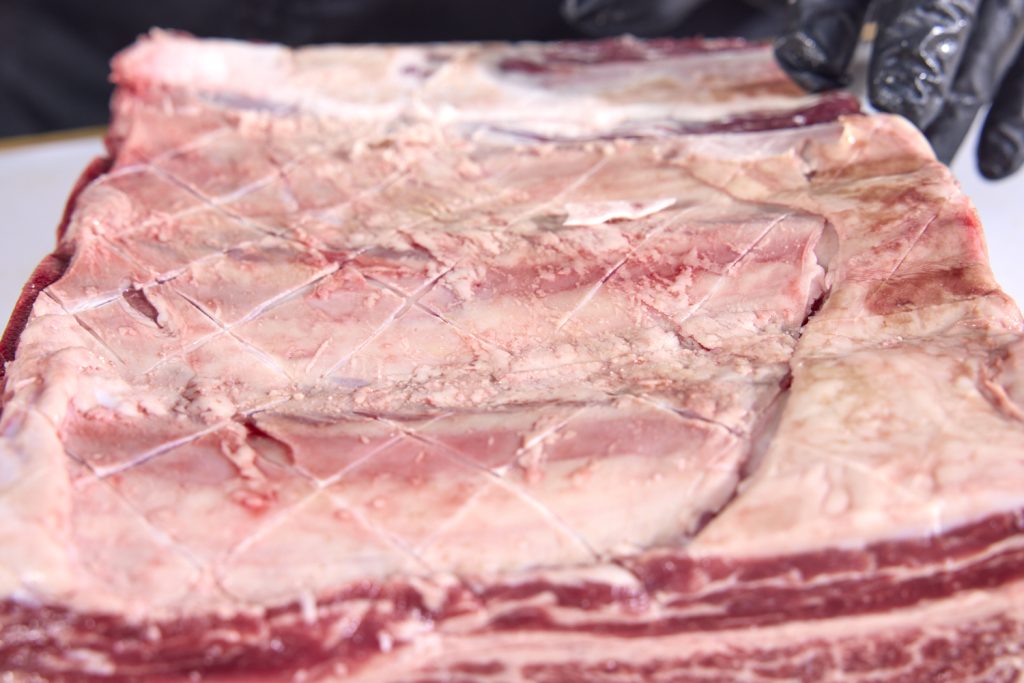
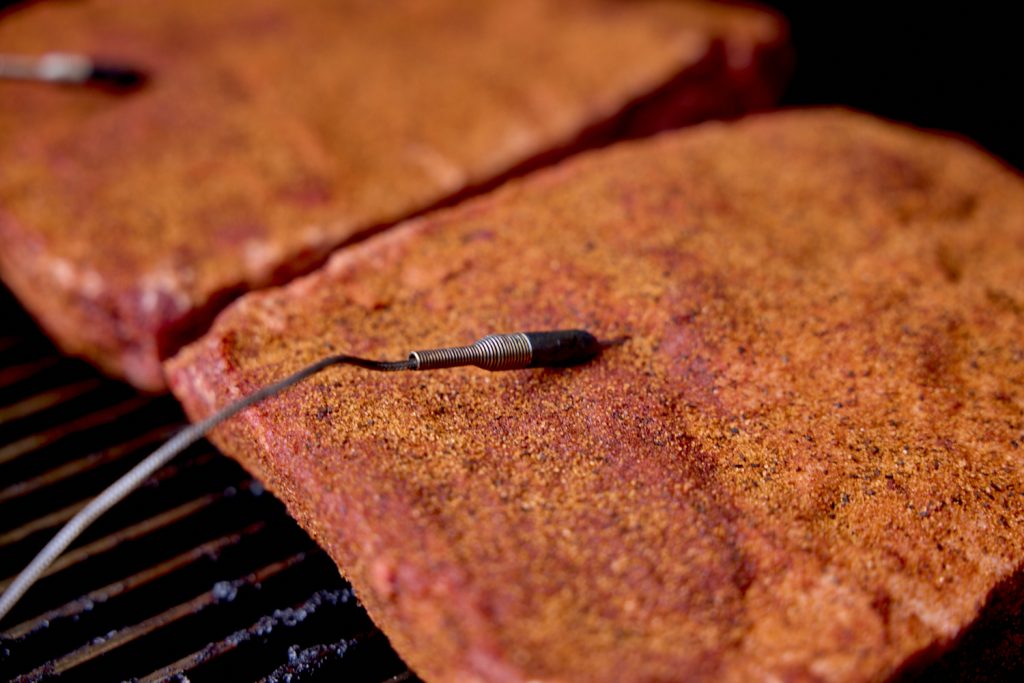
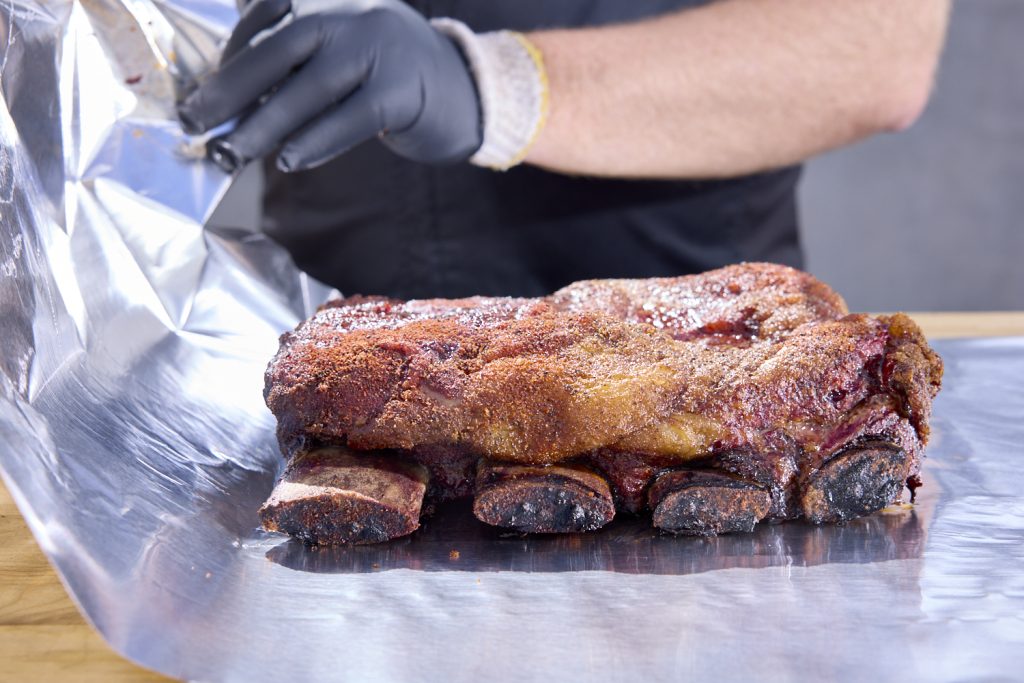
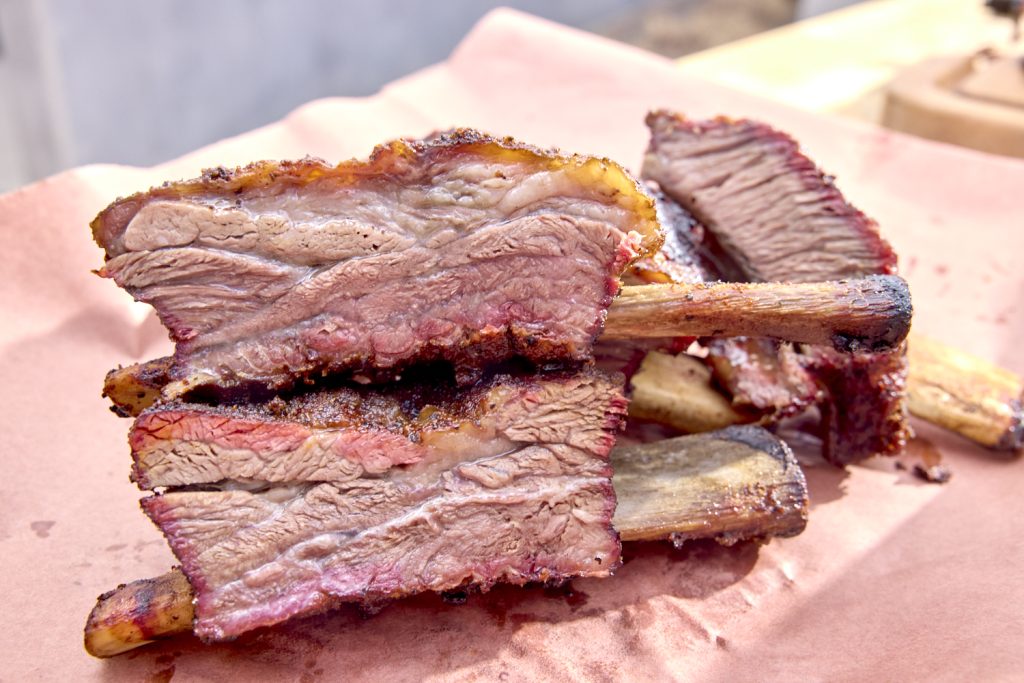

Thom Drabecki says
could you use an instant pot?
Martin says
Thom,
Sure, you could use any slow-cooker or pressure cooker to cook these, and they’ll be delicious—not to mention faster if you use a pressure cooker. But they will lack that smoky flavor of the BBQ. You could smoke them for a while and finish them in the cooker, then you’d have some of the flavor. The only thing missing then will be the bark. I say try it and see how you like the results.
Happy cooking!
RogerWilco says
Just a little, “corrected” info, on beef ribs, and what one will actually receive: Beef Plate Short Ribs are IMPS# 123A. These are, specifically, rib numbers 6,7,& 8 (a three-bone rack). This cut is sourced from just below the ribeyes.
Beef Chuck Ribs: IMPS# 130, are rib numbers 2,3,4,5, & 6 (a four bone rack). Sourced form just above the brisket.
Beef Back Ribs: IMPS# 124, are rib numbers 6,7,8,9,10,11, & 12 (a seven-bone rack). These are sourced from the spine, proceeding downward.
“IMPS” is the Institutional Meat Purchase Specification, with each specific cut issued an exact product number, and is not open to interpretation. Any good butcher should be able to get excatly what the customer wants by looking up these numbers, if required.
RogerWilco says
CORRECTION: Beef Chuck Ribs contain only numbers 2,3,4, & 5. Evidently, math are hard for me…… Sorry.
geoffrey says
Just curious…what’s your black rub? Is it just salt and pepper like Aaron Franklin calls for or is it something else….looks pre-made in a jar…if so, are you at liberty to say what it is?
Martin says
Geoffrey,
For this particular cook we used a commercial pre-made from Jess Pryles. I wholeheartedly agree with Aaron, though—S&P will do just fine!
Paul Bryant says
Looks like you’re using a Grilla OG pellet smoker. I have one and followed the Franklin recipe using my smoke 4x and they turned out great. Best piece of beef to come off any of my pits ever
Holly says
How long does it take, start to finish?
Martin says
It took us about 5 hours, all told.